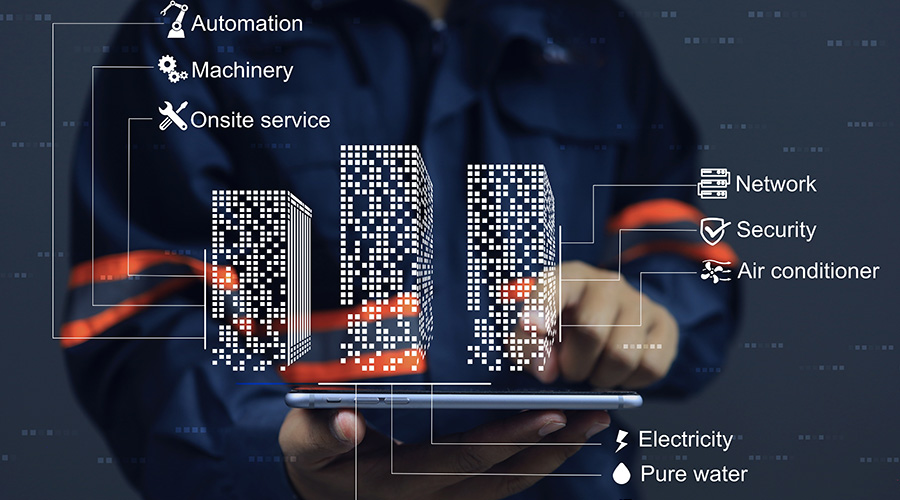Taking Software for a Test Drive
Whether working with a demo package or checking the performance of systems operating in other organizations,
knowing what to look for is key for facility executives.
It wasn’t long ago that facility executives had trouble finding software that would help them manage facilities. Today, facility executives have the opposite problem. So many different options are on the market that selecting the one that best suits the facility can be daunting.
But the task really is not all that difficult. By digging into the details of each package under consideration, facility executives can narrow the field down to just a few applications.
Before any consideration is given to a particular software package, facility executives must determine the needs of their facility. Facility software packages offer a wide range of features. Not all facilities need all of them. And while facility executives should not limit themselves by selecting a bare-bones system, it does not make economic sense to purchase a system with capabilities that are not needed and will not be used.
But what happens after the needs analysis is completed? Vendors will be more than happy to come in and demonstrate the power of their systems. But those demonstrations are only the starting point. After that, the facility executive should conduct a thorough technical evaluation of each package. This evaluation will include both quantitative and qualitative measures. If the evaluation is completed thoroughly, the field will be narrowed down to just a few packages.
Get a Demonstration Package
One of the most important steps in the evaluation process is to sit down and work with a copy of the software. Request a fully functional demonstration copy from each of the vendors with products that appear to meet the needs of the facility. These demonstration copies will come preloaded with data that is typical of many facilities. The copies will allow facility executives to access existing data, run sample reports and enter new data. By performing these tasks, the facility executive will develop an understanding of how easy or difficult the software is to use.
The demonstration copy will also allow a review of the processes and procedures used by the software. The closer these processes and procedures are to those currently in use, or those the facility executive wishes to move towards, the quicker and easier it will be to implement the new package.
Consider the flexibility of the system. Some facilities have systems and components that are not commonly found in other facilities. Can the software take these items into consideration? No system will perfectly match the needs of a facility, so changes will have to be made. If the software lacks flexibility, then the changes will have to be made to how the facility conducts business. If there are too many changes, the software can become more of a burden than a benefit.
The demonstration package should include a fully functional help system. In some packages, help systems have been added as an afterthought; they are incomplete and difficult to use. In other packages, the help system appears to have been written by high-level technical experts for other technical experts. Make certain that the help system really does help the intended users.
Finally, review the documentation provided with the demonstration system. Although the documentation will be different from the documentation provided with the final package, it will serve as an indicator of how complete and understandable that documentation will be.
Check References
The technical evaluation will reduce the field of competing software applications and vendors. Now is the time to check how installed systems are functioning. Each vendor should supply a list of at least three locations similar in both size and operations to your facility where the software has been installed and been operating at least a year.
It is important to remember when checking references that vendors will supply only locations where they are reasonably certain that their customers are satisfied with their product. For that reason, a reference check should be used not only to determine how satisfied the users are, but also to help find out how well the software will function in your facility.
Contact each facility and, if possible, arrange for a site visit. Site visits allow facility executives to talk not only to system managers, but also to those who use the system every day.
Start off with basic questions:
- Are you using the software on a daily basis? It is surprising how many facilities install a software package then fail to use it. Sometimes the software is too complex. Sometimes it failed to do what the facility executive expected it to do. In other cases, the facility executive may have found that it is easier to continue with the systems already in place.
- How well has the software lived up to expectations? If it doesn’t, find out why. Did the vendor promise the world in order to make the sale, or were the expectations of the facility executive unrealistic?
- What levels and type of training did the system developer offer? Was the training conducted on site or at the developer’s facility? How effective was that training? Is training made available to personnel even after completion of the contract? Remember, all systems will require at least some training if they are to operate effectively and efficiently.
- What is the implementation process? Rarely is a system plug-and-play. Problems will be encountered. Find out what problems the facility executive experienced, and, even more important, how the vendor responded to them. Did the vendor adopt a “whatever it takes” attitude or did they walk away? Not all problems will be the responsibility of the vendor, but it is important to see how the vendor responds to any problem with the installation.
- How has the vendor performed since installation was completed? Is there regular contact with the user to see if everything is functioning properly, or does the vendor wait for the facility to contact them? Has the vendor sought and responded to feedback from the system users? How responsive is the vendor to suggestions involving the product? How a vendor responds after completing the contract is a strong indicator of interest in improving the product and keeping a customer satisfied.
- What is the vendor’s policy towards software upgrades? Upgrades may provide functions not available in earlier versions, correct bugs, enhance performance in areas like speed or ease of use, or offer better system security. While regular upgrades generally are a positive characteristic, it is the vendor’s policy towards upgrades that must be closely examined.
Over the life of the system, the cost of regular software upgrades can easily exceed the cost of the original software. How often are upgrades offered? Must users pay for all upgrades, including those designed to enhance security and eliminate bugs? What is the cost of the upgrade? Are users required to implement the upgrade, or will the vendor continue to support earlier generations of the software? Who is responsible for installing the upgrade? How smoothly have past upgrades been implemented? Have past upgrades been worth the time and expense involved to implement?
- What level of technical support has been provided? All systems require technical support. Clashes occur between various modules of the software. Users of the system try to do something that the system was not designed to do and get unexpected results. Hardware fails. The net result is that the user will look to the system developer and installer for technical support. Ask the current system users about the level of technical support that has been provided to them after completion of the contract. Do they feel that the support is appropriate? How responsive is the vendor? What does technical support cost? Does the vendor offer a support contract?
These items should be considered to be the bare minimum of issues to be investigated when evaluating facility software options. There will be additional requirements based on the needs of the particular facility. Only by carefully considering each of these items can facility executives hope to implement a system successfully.
James Piper, PhD, PE, is a writer and consultant who has more than 25 years of experience in facilities management. He is a contributing editor to Building Operating Management.
Related Topics:











